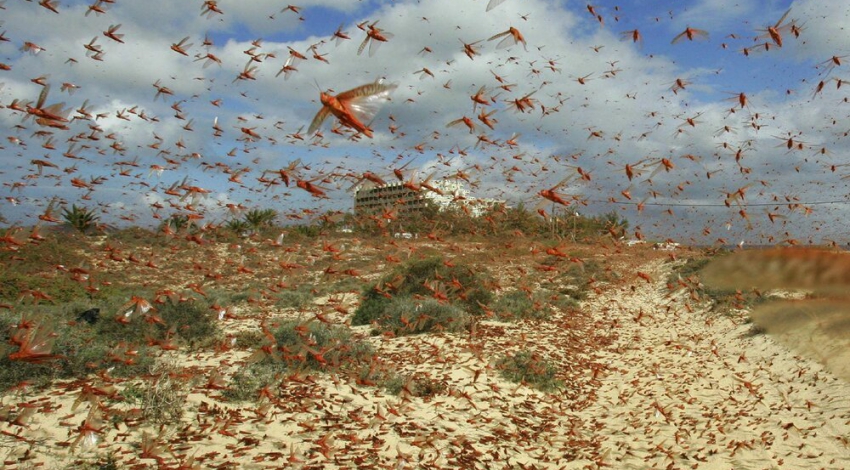Tuesday 11 June 2019 - 17:31
Story Code : 351462
FAO warns of another desert locust breakout in Iran
As a result of unusually good ecological conditions, a second generation of breeding is expected to cause a further increase of locusts in the spring breeding areas of Saudi Arabia and Iran, the report explained.
Desert locusts are short-horned grasshoppers that can form large swarms and pose a major threat to agricultural production, livelihoods, food security, and the environment and economic development.
In Iran, hopper and adult groups and a few hopper bands are present along parts of the coast from west of Bandar Lengeh to the Pakistan border and in the Jaz Murian Basin of the interior. A second generation of spring breeding started in late April with substantial hatching this past week that will cause more hopper groups and bands to form, which could give rise to new adult groups and swarms starting about mid-June if not controlled. Intensive control operations treated more than 18,000 ha so far in May. There is a risk that a few adult groups or small swarms could appear from Arabia at times.
In a more recent report updated on June 5 FAO noted that intensive ground and aerial control operations continued during May against widespread infestations of hopper and adult groups, bands and swarms in Saudi Arabia and Iran that developed from two generations of unprecedented spring breeding.
Swarms moved from eastern Yemen into the central highlands and a few continued into southern Saudi Arabia. A few swarms moved to southern Jordan during a brief period of unusual southerly winds while hopper bands and immature adult groups were present along the Kuwait / Saudi Arabia border. Winter-bred immature adult groups persisted on the northern Red Sea coast of Saudi Arabia and the coast in southeast Egypt. At the end of May, adult groups appeared in the interior along both sides of the Egypt/Sudan border.
While the control operations have reduced locust infestations in the spring breeding areas, populations that are not detected or cannot be treated will form groups and small swarms that will move to summer breeding areas in the interior of Sudan and Yemen, and along the Indo-Pakistan border during June. As rains have occurred some six weeks earlier than normal in these areas, breeding could commence by the end of this month. Depending on the summer rains, two generations of breeding may be possible this year, causing a further increase in locust numbers by October.
Very little breeding occurred in Northwest Africa this spring so locust numbers are currently very low and will remain so. Summer breeding may start earlier than normal this year in Niger and Chad because of the May rains.
All efforts should be undertaken to control the current situation and be prepared for the summer, the report suggested.
Earlier this week Esmaeil Najjar, head of Iran�s Crisis Management Organization, announced that some 153 swarms of desert locusts from Saudi Arabia which penetrated into the southeastern provinces have been controlled.
FAO explains that adult locust swarms can fly up to 150 km a day with the wind. Female locusts can lay 300 eggs within their lifetime while an adult insect can consume roughly its own weight in fresh food per day - about two grams every day. A very small swarm eats the same amount of food in one day as about 35,000 people and the devastating impact locusts can have on crops poses a major threat to food security, especially in already vulnerable areas.
During quiet periods (known as recessions) desert locusts are usually form groups in deserts of Africa, the Near East and South-West Asia that receive less than 200 mm of rain annually. This is an area of about 16 million square kilometers, consisting of about 30 countries.
# Tags











